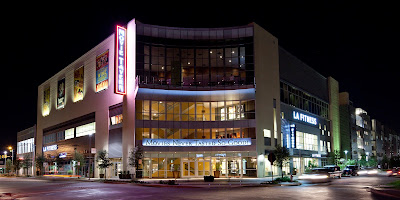Foch Street Properties
I. Executive Summary:
A developer in
possession of three buildings on Foch
Street Fort
Worth
The
district surrounding these buildings on Foch Street Foch Street Fort Worth West 7th Street University of North Texas
Cypress
Equities' W 7th Project was built immediately west of Foch Street

Evaluation and
analysis of the challenges and opportunities these properties provide yield the
following recommendations: Maintain Building #1 and lease it up; Demolish Building
II. Salient Property
Facts:
Subject properties
are owned by two separate partnerships and are actually a collection of two
different parcels containing 3 buildings at 821-1059 Foch Street , Fort Worth ,
TX
III. Property History
and Current Conditions:
Building one was
purchased in 2001. Buildings two & three were purchased in 2004. Building
one was redeveloped from 2002-2003. Building three was redeveloped from 2004-05
and building two was already 100% leased to an industrial user through 12.31.10
at $2.5 s/f gross on the entire space. As of January 1, 2011, Building two was
vacated and empty. The roof required replacement if another tenant were to take
the space. Building three was fully leased with one restaurant/bar tenant and
seven office tenants. Building one was 60% leased with in place rents of $14.50
NNN. Typical size was 4K s/f with restrooms in the rear of the spaces. Typical
dimensions were 27.5x145 s/f demised spaces.
At this point the two
partnerships are effectively at break even cash flow. Tenants of buildings
three and buildings one are covering their portion of taxes and insurance and
their rents are covering the debt service. However, the property taxes on the
unoccupied space and building two would require a capital call to fund the
balance at year’s end. The partnerships were not interested in funding the
delta.
IV. Analysis:
The subject property
lies within the very popular West 7th area of Fort Worth 7th street
However, neither building one nor two work for traditional retailers. The buildings are too deep at approximately 180’ in total depth. Existing tenants are only utilizing 145’ of depth leaving 35’ unused at the rear of building one. Further, retail parking at this site is a nightmare. You can’t park building one retail as is. Building two won’t work as retail.
Further, in order to get building two in a leasable condition, it appears that the partnership would need to replace the roof. The cost of replacing the roof - approx $400K (80K s/f @ $5) would make the project cost prohibitive. It is important to note that the assessed improvement value for each of these two buildings is $1.934MM for building one (valued on income) and $124K for building two (valued on a per lb basis). It’s hard to justify a speculative roof cap-ex project that costs approximately 3x the vacated assessed value of building two. It’s even harder to justify when the parking situation at buildings one and two are placed into the context of the decision.

Finally please consider the assessed land value of the subject properties. Since 2008 the land on which building two & three are situated has appreciated from $770K to $2MM. Further, in 2008 the improvements were valued at $1.6MM (based on income), but today are again only valued at $124K. It’s clear, with all the new development in the surrounding area, the value is in the land. The current improvements are functionally obsolete. The partnerships need to utilize a land bank strategy that allows them to hold for an additional 36-60months without funding the deal and let the land appreciate closer to the high water mark levels of 2008. How do you get there?
However, neither building one nor two work for traditional retailers. The buildings are too deep at approximately 180’ in total depth. Existing tenants are only utilizing 145’ of depth leaving 35’ unused at the rear of building one. Further, retail parking at this site is a nightmare. You can’t park building one retail as is. Building two won’t work as retail.
Further, in order to get building two in a leasable condition, it appears that the partnership would need to replace the roof. The cost of replacing the roof - approx $400K (80K s/f @ $5) would make the project cost prohibitive. It is important to note that the assessed improvement value for each of these two buildings is $1.934MM for building one (valued on income) and $124K for building two (valued on a per lb basis). It’s hard to justify a speculative roof cap-ex project that costs approximately 3x the vacated assessed value of building two. It’s even harder to justify when the parking situation at buildings one and two are placed into the context of the decision.
Finally please consider the assessed land value of the subject properties. Since 2008 the land on which building two & three are situated has appreciated from $770K to $2MM. Further, in 2008 the improvements were valued at $1.6MM (based on income), but today are again only valued at $124K. It’s clear, with all the new development in the surrounding area, the value is in the land. The current improvements are functionally obsolete. The partnerships need to utilize a land bank strategy that allows them to hold for an additional 36-60months without funding the deal and let the land appreciate closer to the high water mark levels of 2008. How do you get there?
V. Recomendations:
Recommendation #1: Demolish Building Two And Utilize Area For Parking
Because of the costs associated with repairing building #2 and the need for additional parking in the general area, we recommend demolishing this building.

Because of the costs associated with repairing building #2 and the need for additional parking in the general area, we recommend demolishing this building.
Reasoning behind recommendation:
1. Support building one as retail, there is
still some value there. The location is incredible, but the building won’t park
well for most retailers. Level building two and utilize the space as parking
that supports retail during the day and perhaps generates some income at night
by providing a pay lot for the surrounding nightlife.
2. Lower the property tax basis to save on tax bill.
3. Avoid the $400K roof expense and any further
TI dollars for prospective tenants
Recommendation #2 – Lease up Building One
Building #1 has solid potential for increase cashflow. Indeed, in the recent past, this building was nearly fully occupied with paying tenants. Since the economy has stabilized and this area has been rejuvenated, the time is ripe to find additional tenants.
 Reasoning behind recommendation:
Reasoning behind recommendation:
Building #1 has solid potential for increase cashflow. Indeed, in the recent past, this building was nearly fully occupied with paying tenants. Since the economy has stabilized and this area has been rejuvenated, the time is ripe to find additional tenants.
1. Building one is already 60% leased at $14.50
NNN
2. Additional parking should help positively
impact leasing effort
3. Sign short term NNN leases and avoid the
estimated $5 TI expense with rent abatement
4. Lease the unutilized space at the back(35’x500’) as storage space
5. Retail market rents for the area are $13 -
$14, this space is irregular, so go below market at $12 and fill the space!
6. The intent is to have the tenants float your
insurance and property taxes – break even while the partnership banks the land
Building One occupants include the Bikram Yoga Studio, the Greener Good (retailer of sustainable products for
the home/ office/ children), Red Productions (film production), La Familia
(award-winning local Tex-Mex), Chimy's Cerveceria (popular patio bar/cafe), Bess
& Evie's Vintage Clothing.
Ideal prospective tenants would
include exceptional quality restaurants and retail shops such as: cafe/coffee bar; gourmet casual restaurants; Spanish restaurant; Thai
Recommendation #3 – Leave Building Three
Alone
Building #3 is fully leased and performing like a champ! We recommend maintaining current operational strategy in place for this building.

Reasoning behind recommendation:
Reasoning behind recommendation:
1. Building is 100% occupied; it works
2. Overall location is great
3. Location and visibility relative to the rest
of the site is terrible, but it works because it parks and rent is cheap
(assuming same $14.50 NNN).
4. Leave it alone!
VI. Conclusion
The West 7th area has quickly become a European urban village, nestled between downtown, the cultural district and Trinity Park. The city of Fort Worth says it has added millions in property value and sales taxes. All this momentum bodes well for recently completed developments and for the prospects of development projects scheduled to occur in the foreseeable future.